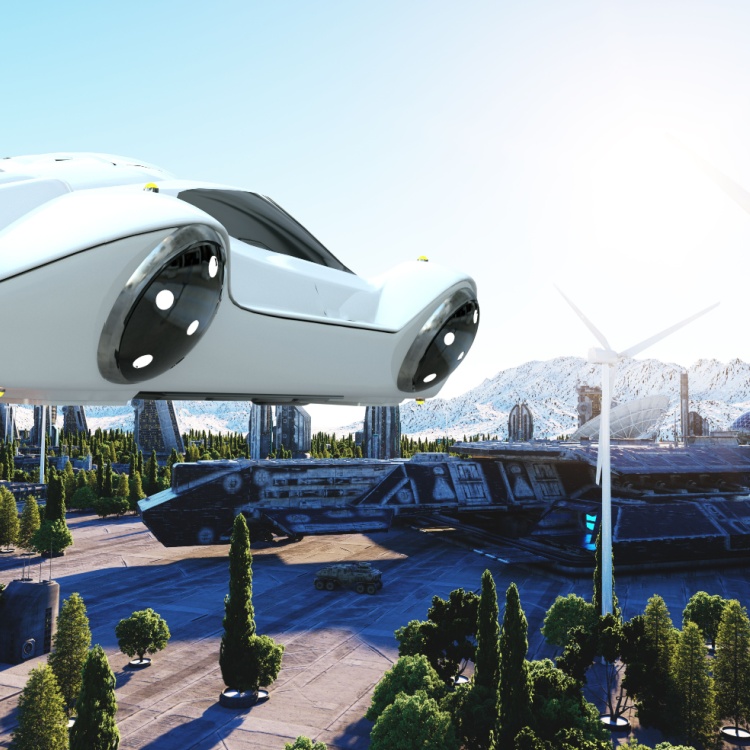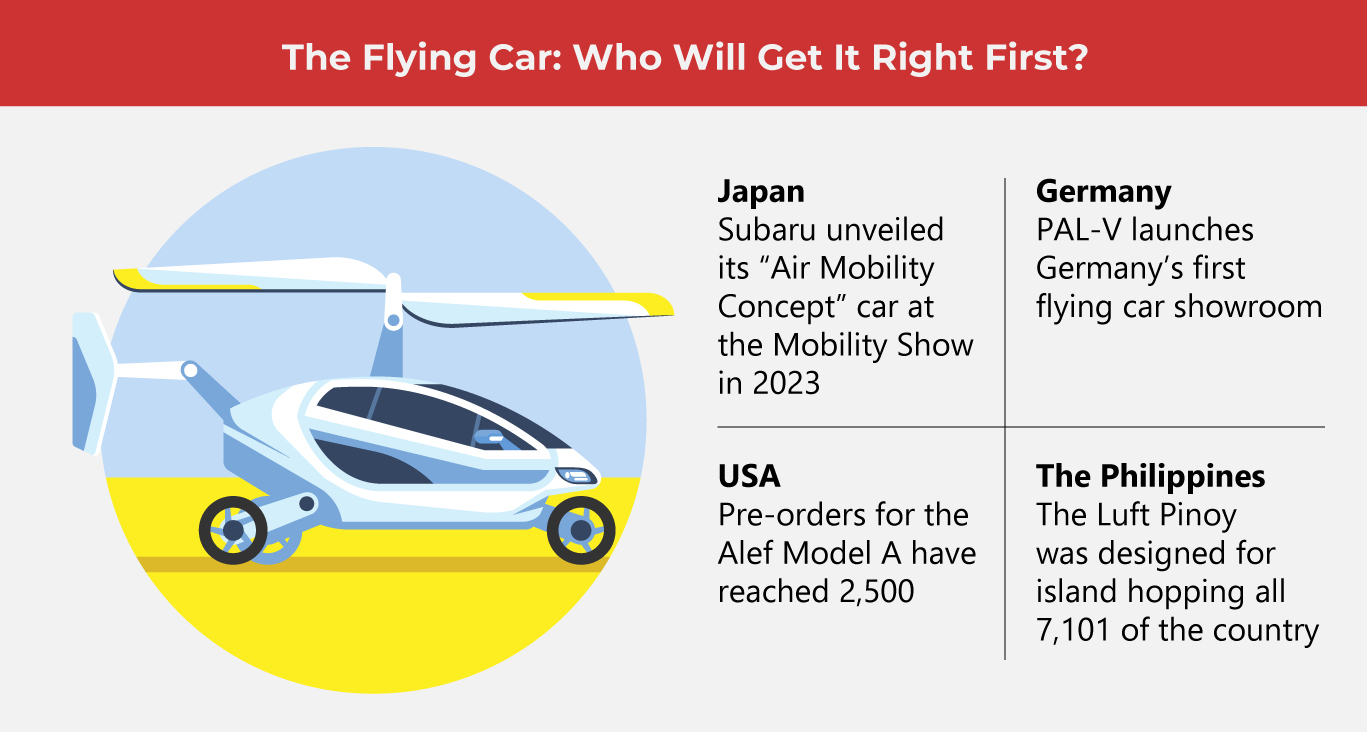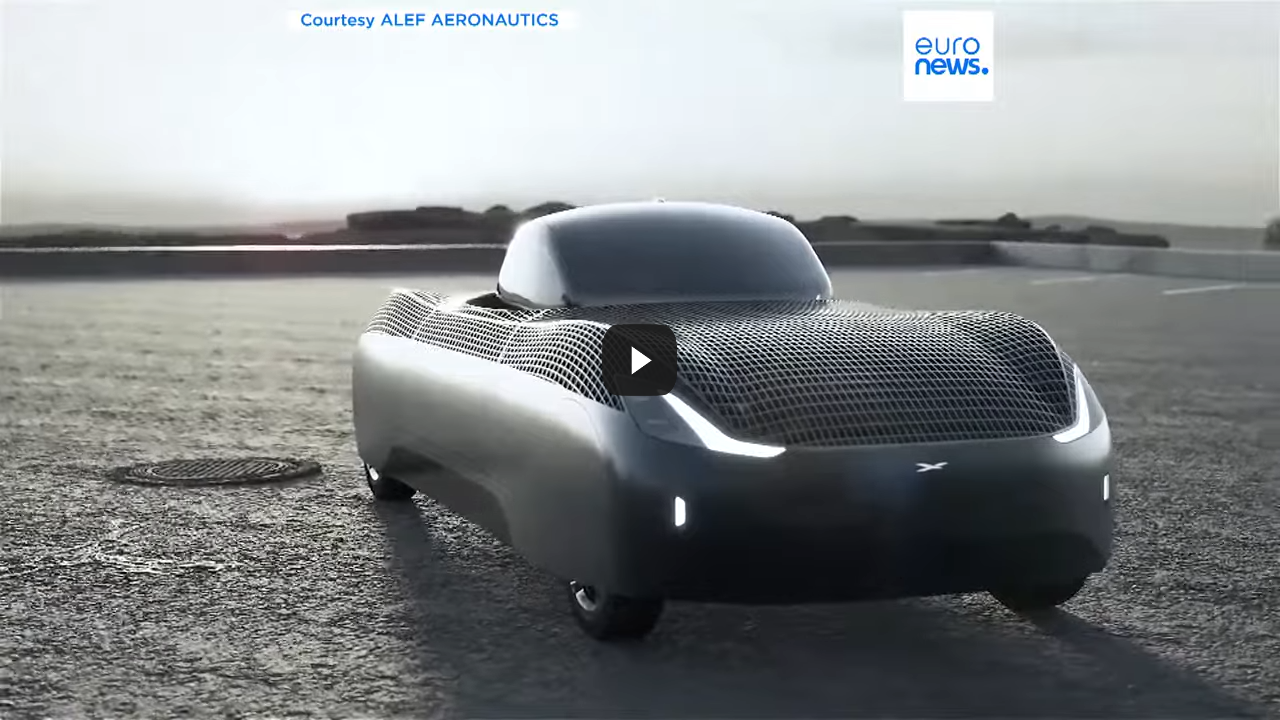Are Flying Cars Ready to Take Off?

“Roads? Where we’re going we don’t need roads!”
Anyone who’s seen the end of the movie “Back to the Future” might recognize those immortal words uttered by Doc Brown, just as their DeLorean lifts off the ground and flies into the horizon. And oh, what about the flying jalopy from “Chitty Chitty Bang Bang”? Deckard’s vehicle in “Bladerunner”? The Weasley’s flying car in the Harry Potter films?
Man has made his dream of flying come true, but man wants to take things a step further. Why not a flying car?
Film inspirations aside, the flying car is closer to reality than one might think. Today, flying cars or electronic vertical takeoff and landing (eVTOL) vehicles are being developed all over the world. Japan, the Philippines, China, Germany, and the United States are just some of the countries working on prototypes. Some are even exhibiting their concepts at car shows already, getting the general public all hyped up about the possibility of a flying car.
[Also read: Would You Trust A Robotaxi?] 
Our fascination with the flying car
Engineers have been attempting to make cars fly as early as 1906. Some experts such as the technologist J. Storrs Hall say that the 1930s was when the concept of flying cars was born when two pioneering aviators developed what they called the “autogiro”. Juan de la Cierva and Harold Pitcairn’s creation needed a runway to take off and had twirling rotors. When the autogiro landed on the White House’s lawn in 1931, Pitcairn received a reward from President Herbert Hoover. The autogiro was for all intents and purposes, one of the first legitimate flying cars.
Today, many think that flying cars might mitigate road traffic problems. For sure, motorists stuck in terrible traffic have at some point, fantasized about their cars lifting off from the highway and zooming past everyone else. It’s a concept that has Elon Musk a little skeptical, at first. In an interview with Bloomberg in 2017, he said that it was difficult to see flying cars as scalable. “If someone doesn’t maintain their flying car, it could drop a hubcap and guillotine you,” he said.
Regulations challenge the flying car
Still, there’s no stopping technology in man’s pursuit of innovation. Today, many players are placing their bets on the flying car. The technology to create it already exists, so what’s been stopping it from taking over the road (and the sky)?
The challenge for the flying car lies in existing regulations governing our roads and our skies. These may vary from one global region to another. Countries have different regulations in place for automobiles and aircraft. When a vehicle like an eVTOL straddles both worlds, it makes things a lot more complex.
For example, some eVTOLS can be considered ultra-light aircraft, and some are not. Depending on the country, some of these eVTOL vehicles may be granted licenses to fly and be tested, but with limits.
A great example of this would be Alef Aeronautics, a startup company based in California whose flying car, the Alef Model A has received 2,500 pre-orders. According to CNBC, the Federal Aviation Administration (FAA) granted Alef a special airworthiness certificate, allowing the company to exhibit, research, and develop its flying car.
Flying cars and air taxis, oh my!
Meanwhile, in Asia, the flying car has been appearing in various iterations. Subaru unveiled its “Air Mobility Concept” car at the Mobility Show (formerly known as the Tokyo Motor Show) in October 2023. Subaru’s flying car looks very much like what we imagine flying cars ought to look like—sleek, shiny, and compact.
China had its own flying car milestone in 2023 also. According to VOX, China was able to commercially fly a “completely unmanned, autonomous passenger drone” to Guangzhou. The term “flying car” just might be a bit of a stretch, because the EHang EH-216S can’t be driven on the road, but it definitely can fly.
The Philippines’ flying car project, the Luft Pinoy on the other hand, was designed with island hopping in mind. LiveScience calls it “an electric minivan combined with a hydrogen-powered eVTOL system”. While still in its conceptual stage, the Luft Pinoy will be a vehicle navigable on land as well as in the air.
The project is a collaboration between a Filipino company eFrancisco Motor Corporation (eFMC) and a U.S.-based company, LuftCar. Its CEO, Sanya Sathya said in a press release, “Our flying and road vehicle concept is tailor-made for connecting the archipelagoes and serving cargo, air ambulance, tourism, and regional transportation verticals. Our hydrogen propulsion will serve long-distance and heavy payload-carrying needs in the region.” 
As one of the Top 20 EMS companies in the world, IMI has over 40 years of experience in providing electronics manufacturing and technology solutions.
We are ready to support your business on a global scale.
Our proven technical expertise, worldwide reach, and vast experience in high-growth and emerging markets make us the ideal global manufacturing solutions partner.
Let's work together to build our future today.
Other Blog



